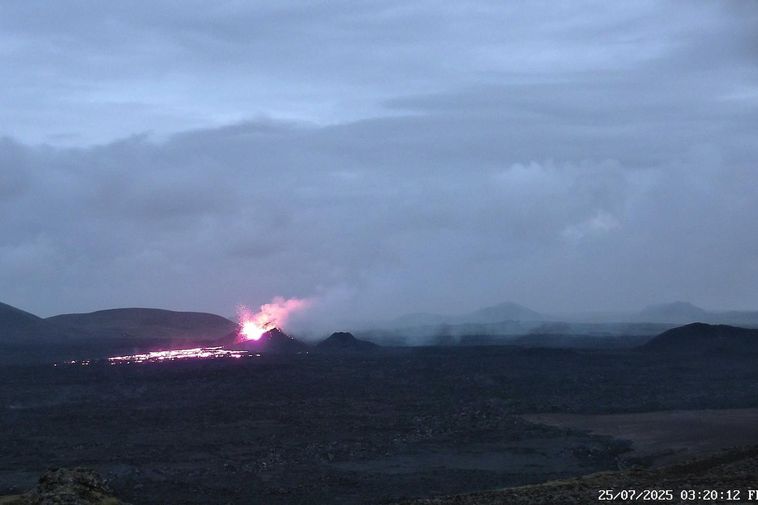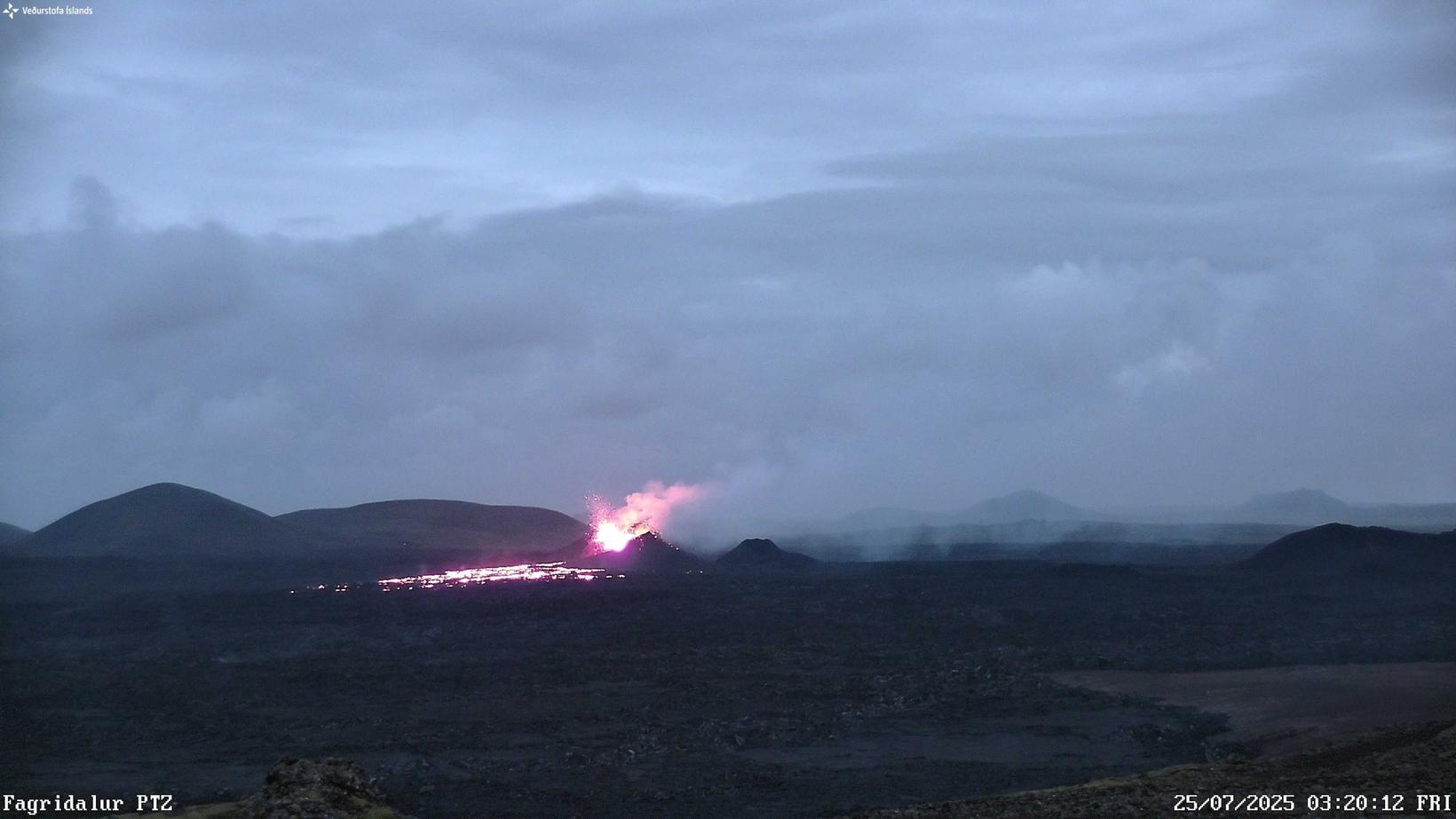The photo is from the Icelandic Meteorological Office’s webcam at the eruption site around 3 a.m.
Photo/Icelandic Meteorological Office
Volcanologist Þorvaldur Þórðarson believes that the eruption in the Sundhnúkagígar crater row, which began on July 16, is nearing its end — and that the ongoing volcanic episode in the area may also be coming to a close.
Eruption activity has slowed, although lava is still emerging from a single crater. This marks the ninth eruption in the Sundhnúkagígar row since the volcanic episode began there in December 2023.
“It appears to me that the eruption is in its final throes and is fading out. Activity in the crater is minimal, and it has decreased significantly over the last few hours,” Þórðarson said in an interview with
mbl.is
.
No signs of an inflation
He finds it notable that inflation has occurred, even though nine days have passed since the eruption began.
“As things stand, magma is not refilling the shallow magma reservoir beneath Svartsengi, which is good news. As long as that remains the case, we are not seeing the inflation needed in that chamber to trigger another eruption. If this continues, it suggests that the episode might be coming to an end — which would be the best outcome,” he said.
Little to no volcanic haze has been measured overnight or this morning. However, according to the Icelandic Meteorological Office, volcanic gas pollution is expected to drift northwest and west today. It may be detectable in the northwestern and western parts of the Reykjanes Peninsula, and if winds shift to the north this evening, the pollution could reach Grindavík.

